How Hillary Clinton and Haiti’s earthquake changed the life of Trump’s Supreme Court pick
- Oops!Something went wrong.Please try again later.
“Do you still want him?” asked the voice on the phone.
Amy Coney Barrett had tried to adopt a young Haitian boy named John Peter, only to face roadblocks followed by obstacles. She’d all but given up on adopting her second child from Haiti and had recently become pregnant again when the call came.
It was January in South Bend, Indiana. She said she put on a heavy coat and headed to nearby Notre Dame University, where she taught law.
“I walked up to the cemetery on campus and I sat down on one of the benches and I just thought, ‘Well if life is really hard at least it’s short,’ ” she recounted to the sounds of laughter from members of the Notre Dame Club, an alumni group gathered in the nation’s capital on Feb. 19, 2019.
In a strange twist of historical irony, the Supreme Court nominee put forth by President Donald Trump was able to adopt her child from Haiti thanks in part to Trump’s 2016 arch-rival, Hillary Clinton, who as secretary of state eventually got Haiti to agree to the airlifts of the adoptees in the aftermath of the devastating Jan. 12, 2010, Haiti earthquake. Haiti is the same nation that Trump infamously derided as a “sh-thole country” in a 2018 meeting with senators on immigration, and he also referred to Haitian immigrants as “all have AIDS” during another meeting on immigration in the summer of 2017.
Barrett’s Haitian adoptions are not a topic that came up during her 2018 confirmation hearing for the U.S. Court of Appeals for the Seventh Circuit. Staffers for several senators, some of whom are under pressure to delay her U.S. Supreme Court confirmation hearing until after the Nov. 3 presidential election, acknowledged they haven’t looked into the adoptions or asked her about them.
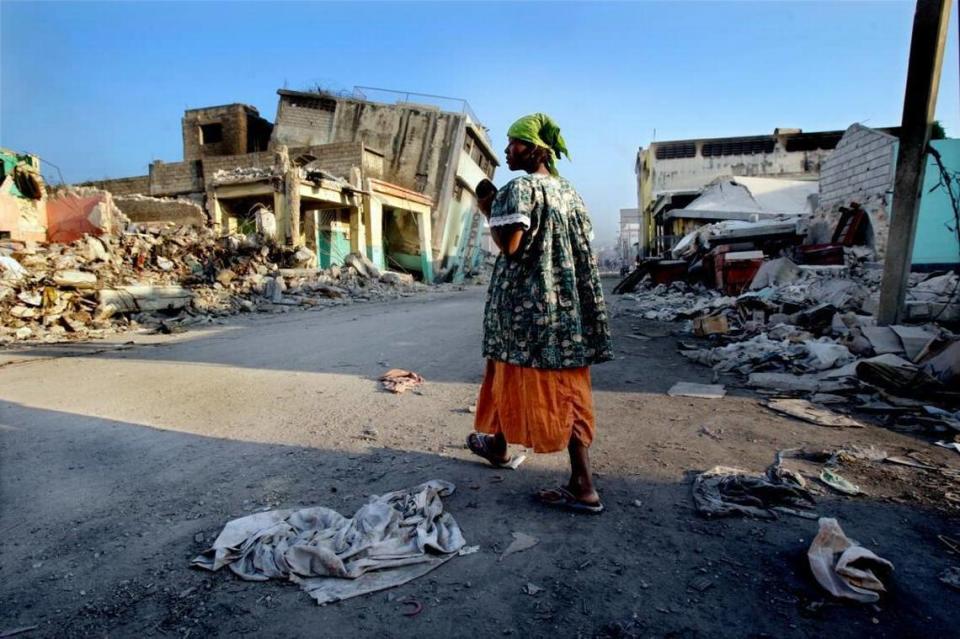
There’s nothing to suggest that Barrett and her husband, Jesse, also a lawyer, used a questionable agency or did anything untoward in the process. What little is known is that Coney Barrett, 48, a devout Roman Catholic like her mentor, Supreme Court Justice Antonin Scalia, did not appear to work through a Roman Catholic charity. In her few public comments on the matter when speaking about her seven children — five of whom are biological, including one with special needs — she referred to nannies, not nuns, generously caring for the Haitian adoptees.
And several orphanages and charity groups involved with Haiti steered clear of any discussion of the sensitive matter.
But the cataclysmic event that changed the lives of the Barrett family and hundreds of would-be adoptive families like theirs was a 30-second earthquake with an epicenter stretching 16 miles west of the capital, Port-au-Prince, on the afternoon of Jan. 12, 2010.
The 7.0 magnitude quake left anywhere from 100,000 to 360,000 dead, depending on whose estimate you accept. In the aftermath, untold numbers of Haitians were missing, and government documents and adoption applications were buried underneath piles of rubble. Fears of additional temblors stretched from Port-au-Prince to Washington.
The quake was followed by a period of chaos in which the United States and other countries offered a one-off humanitarian airlift of children, already in the adoption process, out of Haiti to new lives. Rules were bent, paperwork burdens were eased and adoption agencies scrambled to get kids who had been in the adoption pipeline out and to new homes.
“The adoption agency called us and said, ‘Any child who had an adoption in progress at the time that the earthquake had happened, the State Department will lift some of the paperwork requirements that were keeping them in the country, so are you still willing to take him?’ ” Barrett told the Notre Dame alums. “So, we said, ‘Of course.’ ”
Listen to today's top stories from the Miami Herald:
Subscribe: Apple Podcasts | Spotify | Amazon Alexa | Google Assistant | More options
Chaotic backdrop
The story of Barrett’s adoption of children from Haiti is both remarkable and heartwarming. But the adoptions came against a chaotic backdrop where the process sparked concerns about increased child trafficking and eventually led to big changes. These changes have led today to just a small number of agencies being allowed to place Haitian children up for adoption and a more rigorous internationally accredited process by which they’re allowed into the United States.
In 2010, adoption challenges weren’t new to the Supreme Court nominee. She’d already adopted a daughter, Vivian, from Haiti in 2005, one of only 234 such U.S adoptions that year involving Haitian children, according to U.S. State Department records. That year marked a transition from another chaotic period in Haiti. A year earlier, the country’s democratically elected president, Jean-Bertrand Aristide, fled to exile amid a bloody 2004 coup he accused Washington of supporting.
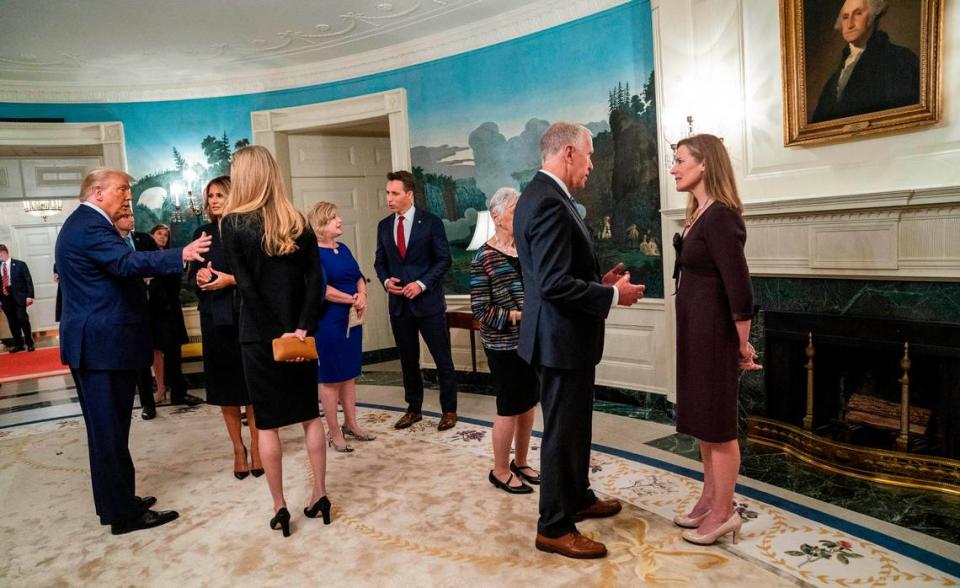
During her July 9, 2018, nomination hearing for a seat on the Seventh Circuit Court of Appeals, Barrett introduced to the Senate Judiciary Committee “our miracle” Vivian, who by then was 15 and sitting behind her.
At the time of the adoption, Vivian was so malnourished and weak with rickets that her legs bowed out. She weighed 11 pounds at age 14 months, still wearing clothing sized for newborns and couldn’t pull herself up.
“We were told she might never walk normally or speak. Today Vivian is a track star, and I assure you she has no trouble talking,” Barrett told senators, prompting laughter.
The Supreme Court nominee opened up a bit more a year later to the alumni group, telling members there were so many bureaucratic mix-ups with John Peter’s adoption that the family “mentally and emotionally” had closed the door by December 2009.
“It looked like it wasn’t going to happen and then they told us it wasn’t going to happen because of paperwork,” she said.
Then came the phone call from the adoption agency in January after the quake.
Barrett’s 3-year-old adopted son was among 1,152 Haitian children who came to the United States under the Haitian humanitarian parole program, based on the judge’s public comments and timeline.
‘Not earthquake orphans’
“Those children were all children who were available for adoption and whose parents had been vetted as suitable as adoptive parents. These were not earthquake orphans,” said Diane Kunz, who played a significant role in crafting the program as a lawyer and adoption advocate but did not know Barrett or specifics about her case until it became news last month with Trump’s nomination after the death of Justice Ruth Bader Ginsburg.
“Virtually every one of those children was a child that we did the papers for, and this went through a particular process,” she added.
In December 2010, Kunz and others got Congress to pass a law, the Help HAITI Act of 2010, that granted Haitian children U.S. citizenship following their adoption.
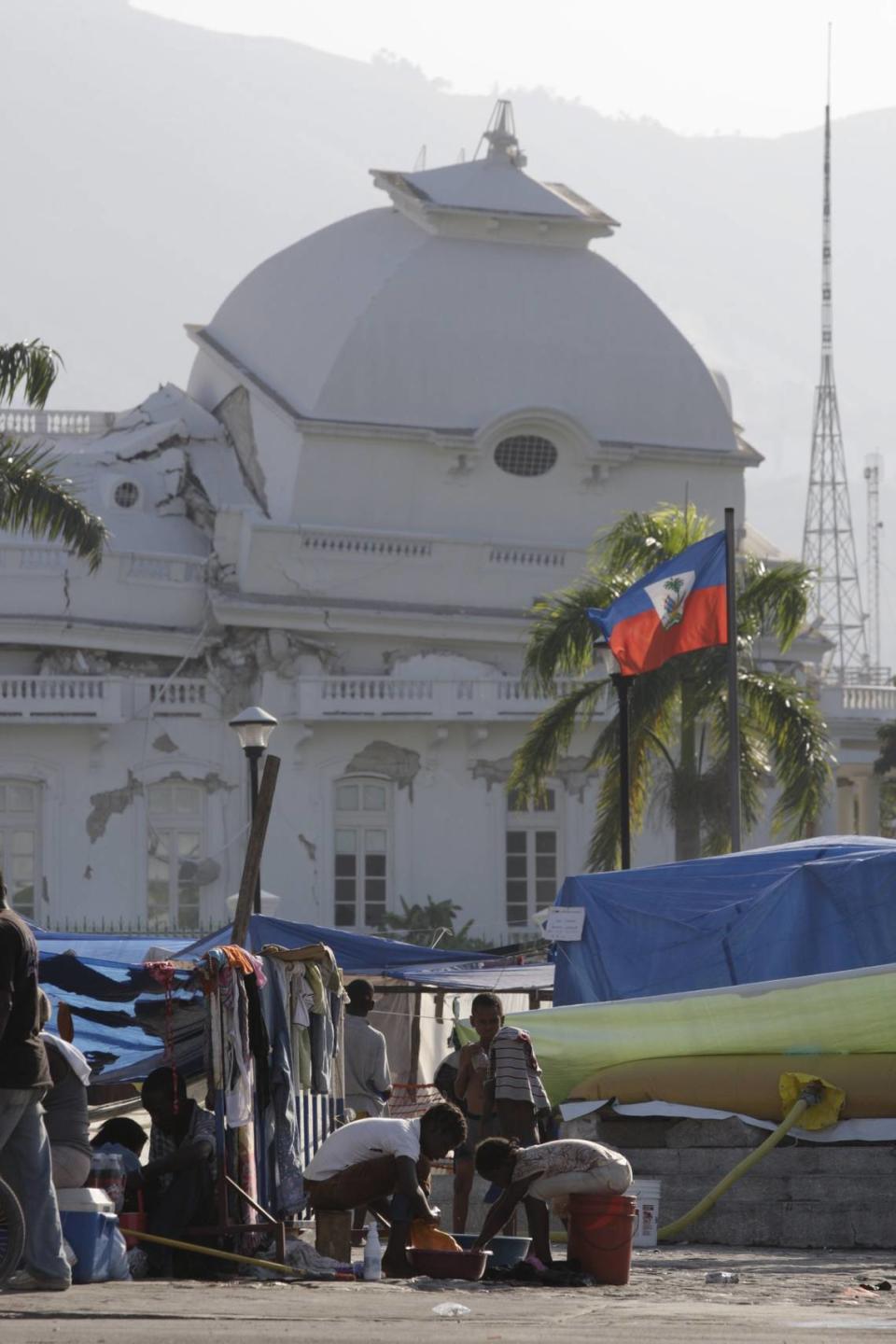
While the children’s Haitian documents had been destroyed in the earthquake, there were U.S. records and immigration files showing that the children had gone through a nearly complete process but their adoptions had not yet been finalized. Because of the destruction from the quake, the children’s files had to be re-created with the help of Haitian and U.S. authorities.
In a conference room in Washington, representatives of the State Department, U.S. Citizenship and Immigration Services, the Department of Homeland Security and Health and Human and Services all came together with lawyers and crafted the language that would allow children who had been paroled into the United States to have a clear path to adoption and then citizenship.
“This was done as above-board as you can do,” Kunz, a mother of four adopted children from China, said about the Help HAITI Act. She serves as co-executive director of the Center for Adoption Policy, a nonprofit that doesn’t place children but has worked to break down barriers to international and domestic adoptions since 2002.
Expediting process
Until recently, Haitian adoptions could be messy and fraught with anguish because of regulations that fueled widespread frustration and disenchantment. Prospective adoptive parents were sometimes forced to wait up to 10 years to take a child home, while shuttling back and forth to Haiti as they confronted bureaucracy and corruption.
The system fell under the spotlight in the aftermath of the quake when 10 U.S. Baptist missionaries were detained while trying to take a busload of 33 children out of Haiti through the neighboring Dominican Republic without proper documentation.
Kidnapping and criminal association charges would eventually be dropped. But the incident, which garnered international attention, fed concerns about Haitian children falling prey to child traffickers for prostitution or for their organs. It led to questions about the legitimacy of the airlifts, which the country’s prime minister at the time insisted had been vetted and were legal.
“Everybody brings them up. Ten years later, you say Haitian ‘adoptions,’ they say ‘missionaries.’ It’s so frustrating to me because the Haitian government did everything they could. The American Embassy did everything they could. This was a time when everybody rose to the occasion,” Kunz said.
“The missionaries were not doing adoptions,” she added. “That had nothing to do with what we did. What we did was to expedite. This was an expediting process, not a scooping process.”
The expedited adoption program grew out of brainstorming sessions at the Department of Homeland Security, and was approved by its secretary. The idea was to make help felt immediately, and it was then pitched to Secretary of State Clinton, who gave the green light after initial lukewarm support from her agency.
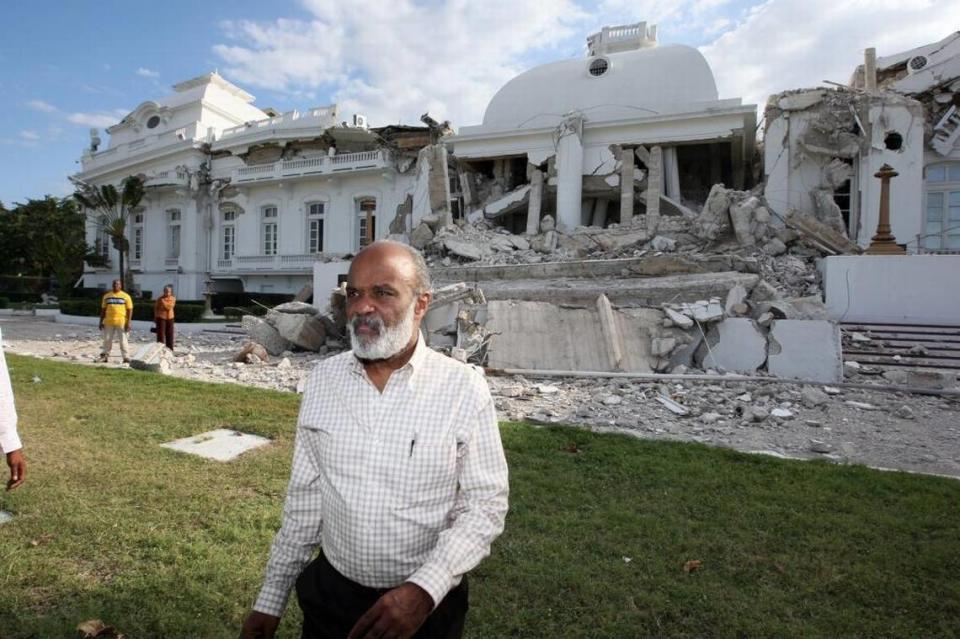
The next step was convincing a resistant Haitian government.
Clinton’s confidant and chief of staff, Cheryl Mills, was given that task. She negotiated with Prime Minister Jean-Max Bellerive and within weeks the expedited adoption process began.
In Haiti, adoption advocates and agencies were compiling lists while diplomats and immigration officials in the United States worked to identify adoption cases that were effectively in the bureaucratic homestretch.
“We were trying to do so much. Accelerating the process didn’t mean we were less diligent. It kind of meant working around the clock for a long time,” said Whitney Reitz, who led USCIS efforts in the expedited adoptions.
With the program open only to children who had cleared most of the hurdles posed by the adoption bureaucracy, they needed proof that their parents were either dead or had lost parental rights through neglect or inability to care for their children. They also needed to have adoptive parents already matched and lined up in the United States before the earthquake.
“All of the cases we were looking at, including Judge Barrett’s, fell into that category,” said Reitz, who did not recall the judge’s case but said it clearly fit the circumstances of the program. A full third of applicants didn’t meet this criteria and were rejected.
To get out of Haiti, the children needed passports and they needed the permission of the Haitian government, which Bellerive eventually gave as the U.S. Embassy forwarded files to his office to approve, said a former Haitian government official knowledgeable about the process. Adding to the complications, many U.S. lawmakers were contacting them on behalf of constituents.
New rules
It’s a different world today. Haiti’s child welfare system, the Institute of Social Well-Being and Research, ushered in a sweeping reform of the country’s adoption process in 2014 after temporarily shutting down international adoptions two years prior.
The overhaul by the agency’s director, Arielle Jeanty Villedrouin, has made adoptions more transparent and predictable, and has added a measure of protection for children. U.S. citizens looking to adopt, for example, must now go through an accredited adoption service provider in the United States and apply under special rules.
Villedrouin put other safeguards in place that make it difficult to adopt children under 3, ban private adoptions and set a quota on the number of yearly international adoptions. Also, before a child is placed for adoption, an investigation must be done to ensure that no other relatives are capable of taking care of the child.
In Haiti, 80 percent of the children in orphanages are not orphans in the U.S. sense. They have at least one living parent who might have placed the child in a group home to be cared for, not to be adopted, according to UNICEF. To protect these children, Villedrouin has introduced the first foster care system in the country as a means to keep children out of orphanages, the majority of which are unaccredited and substandard.
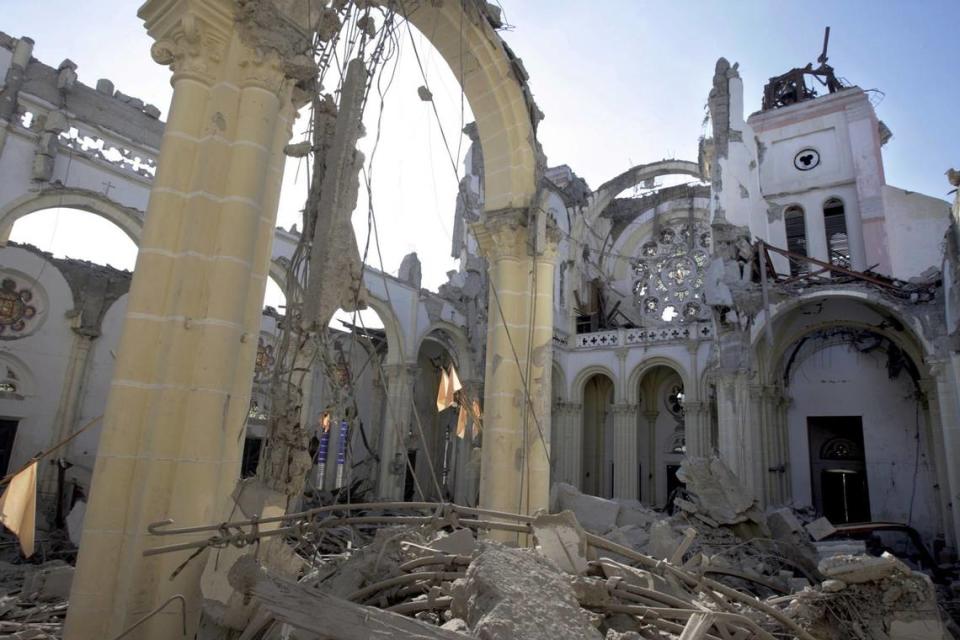
Lucy Armistead, an adoption advocate who was in Haiti during those early days of the disaster, recalls crawling through a partially collapsed building that housed one Port-au-Prince adoption agency, New Life Link, run by Haitian-American Jacob Bernard, to retrieve the buried files of children so the paperwork could be forwarded to the embassy and, ultimately, to USCIS for processing.
“That night we just sat up in our tent with our flashlights and we went through the files and pulled out the relevant documentation that would be needed to show that the child was eligible for adoption and the child had been matched ... all that would be typical for processing the visa for a child,” Armistead said. “We took those to the embassy with the children that were identified and started making calls to those families, basically saying … ’Do you still want this child? Do you still want to finish this adoption?’ ”
As the visas arrived, teams took the children to the airport, where they were then flown out to Miami and Orlando, where Jesse Barrett eventually picked up their family’s new addition, John Peter.
A decade later, Armistead and others who have spent their lives in the trenches of legal adoption hope the spotlight shone on nominee Barrett might draw much-needed attention to international adoption.
“There is an international adoption crisis that is happening right now. The numbers have dropped significantly,” said Armistead, executive director of All Blessings Inc., a Christian nonprofit organization in Owensboro, Kentucky, that helps American families adopt children from Haiti and five other nations.
The State Department isn’t as helpful as in the past, she said, and adoption professionals are retiring and a younger generation is not following in their footsteps.
“We have families who are on their third or fourth [adoption] agency, so it’s a deplorable situation,” she said. “It is something that is unnecessary. It is something that was foreseen, predicted and still there is little movement toward solving the problem.”

